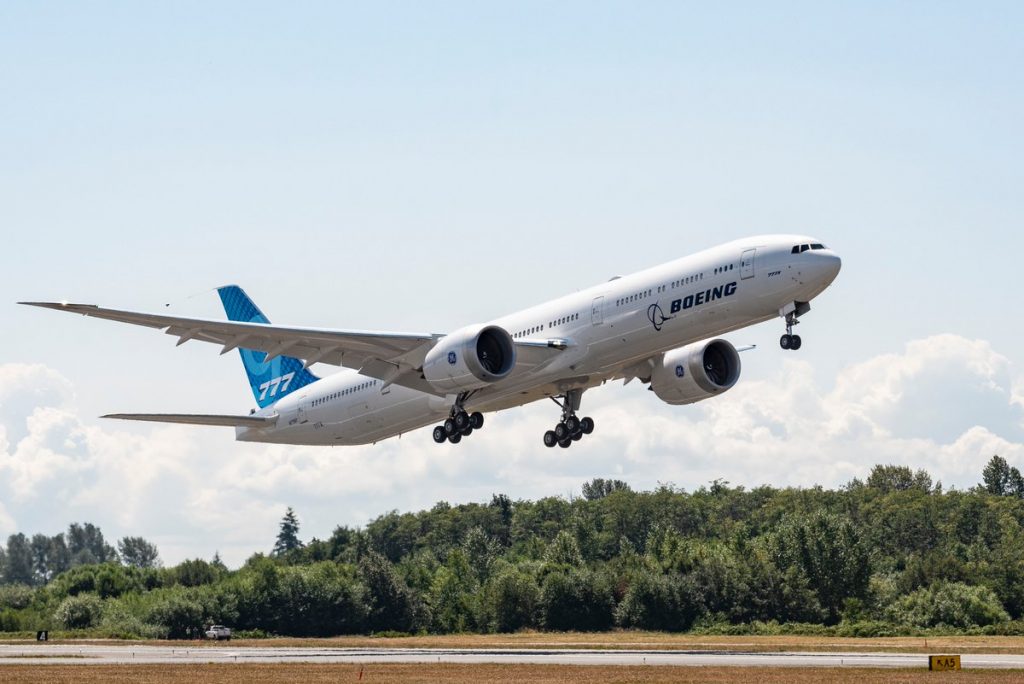
Boeing’s latest 777X aircraft has completed both its longest and first international flight to Dubai for the biennial air show.
The 777-9 twin engine test aircraft travelled 15 hours nonstop from Seattle’s Boeing Field to Dubai World Central, landing at 2:02pm GST Tuesday, 9 November.
The Dubai Airshow 2021 will be the first major international aerospace trade show to return following the COVID-19 pandemic, albeit under capacity restrictions.
The United States planemaker’s jet will be on “static display and featured in the show’s flying program”, which begins on 14 November.
Despite the high-profile cancellation of the 2021 Paris Air Show, which was set to occur in June, the Dubai Airshow will run until 18 November, showcasing emerging aviation technologies, start-ups, future transport and sustainability.
The event is set to reach new levels of strategic importance in the aerospace sector, with support from the UAE government.
This year, the show will focus on 5G, AI, robotics, future transport and cargo.
Built on Boeing’s older models, including the 777 and 787 Dreamliner, the 777-9 is slated to become the “world’s largest” twin-engine aircraft, operating on better fuel efficiency.
The variant was announced in 2013 and completed its inaugural flight in January 2020, but its commercial debut has been plagued with numerous delays and mishaps.
In June, the Federal Aviation Administration flagged Boeing that the 777X would likely not receive certification until late 2023 due to the lack of data and a preliminary safety assessment.
It was supposed to enter service last summer, however according to a letter, the aircraft is not ready to receive its crucial Type Inspection Authorization (TIA) readiness clearance.
Over the past year, Emirates, that is slated to become the 777X’s launch customer slated to replace its current 777s has made several complaints to Boeing for continuous delays.
The airline currently has 126 of the jets on order, but Boeing is two-and-a-half years behind its original schedule for the aircraft to arrive in June 2020.
In May, Emirates warned if Boeing falls short on its contractual performance commitments with the 777X, it would refuse delivery of the aircraft.
The state-owned airline’s chairman Sheikh Ahmed bin Saeed Al Maktoum told Reuters last week he intends to have a discussion with the planemaker during the Dubai Air Show.
“There will be a discussion … before and during the air show.”
Despite a 40 per cent fall in orders for the aircraft in February, Boeing now boasts the 777X family has a total of 351 orders from eight customers across the globe.
The US planemaker expects the first delivery of the aircraft will arrive in late 2023.










